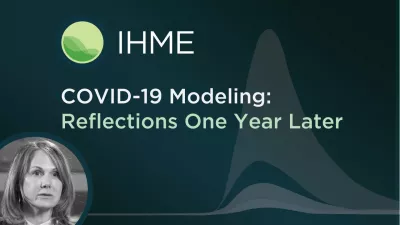
University of Washington Medicine's Michelle Moratti.
Transcription:
We understood pretty quickly that the key to being able to effectively serve COVID patients was to really understand what we were up against, meaning what were going to be the numbers and clinical requirements of those patients, and how we needed to organize and mobilize our resources.
And so we decided to build a model, and I searched the literature, put together a set of assumptions, ran the model, and someone had the suggestion to test those assumptions with IHME. They were great partners. We asked a lot of questions and they were very responsive, always willing to get on the phone with us and describe the model's different sensitivities. Always willing to test assumptions with us.
Some of the assumptions, particularly in the early forecasts, because there just wasn't enough data, moved around a bit, like how many patients would be admitted, how long would they stay, how many might require ICU, ventilators, etc. They were very, very open to interacting with us, and running different scenarios for us, and that helped us both understand the model in a more detailed way and feel confident in the output of the model. So really, really terrific partners for us.